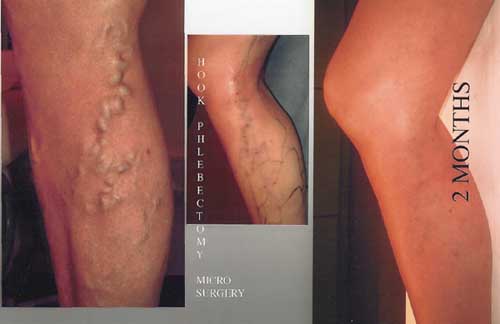Modern life surrounds us with countless toxins lurking in food, water, air, and even personal care products. These substances can negatively affect health, contributing to chronic diseases, weakening immunity, and impairing overall well-being. This article will guide you on how to identify sources of toxins, minimize their impact, and support your body’s natural detoxification processes.
What Are Toxins and Why Are They Harmful?
Imagine your body as a complex machine, like a car engine. When dirt and impurities get in, the engine works less efficiently, parts wear out faster, and eventually, it may break down. Toxins are the “dirt” that enters our bodies through food, water, air, and even skin contact. They disrupt the body’s normal functioning, cause system failures, and lead to health problems.
For example, consider eating processed foods packed with preservatives and artificial additives. The liver, acting as the body’s main filter, must process these substances. Over time, it becomes overwhelmed, and toxins start accumulating in tissues. This can cause inflammation, fatigue, skin problems, and even serious illnesses like cardiovascular diseases.
Another example is polluted air. Though invisible, it contains tiny particles like heavy metals and combustion by-products that enter the lungs, pass into the bloodstream, and spread throughout the body. This exposure can lead to chronic respiratory diseases and low energy levels, as the body expends resources to combat these substances.
Toxins often operate unnoticed. Symptoms like persistent fatigue, headaches, or weakened immunity may seem inexplicable but can result from toxin buildup. Thankfully, our bodies are equipped to fight toxins—organs like the liver, kidneys, skin, and lungs act as a cleansing system. However, when the load becomes excessive, they need help. Understanding where toxins come from and how to avoid them is crucial.
How Do Toxins Impact Health?
Examples of toxin-related effects include:
-
- Chronic diseases: Polluted air and water can trigger lung and cardiovascular conditions.
-
- Immunity: Chemicals in food may lower the body’s defenses.
-
- Energy levels: Toxins often contribute to persistent fatigue.
1. Sources of Toxins in Daily Life
1.1 Food
You’ve probably heard about pesticides used on fruits and vegetables to protect them from pests. While effective, these chemicals remain on produce and enter our bodies, accumulating in tissues and causing inflammation or hormone disruptions.
Processed foods are another concern. Preservatives, flavor enhancers, and colorants don’t just make food “look and taste good.” They disrupt digestion, slow metabolism, and often cause allergies.
Animal products like meat and dairy are also sources of concern. Livestock is frequently treated with antibiotics and growth hormones. Consuming such products transfers these substances into your body, potentially reducing the effectiveness of medical treatments like antibiotics when needed.
1.2 Water
Have you ever noticed a strange taste or smell in tap water? That’s often chlorine, added for disinfection. While it protects against bacteria, chlorine itself is not harmless. Fluoride, commonly found in water, is beneficial for teeth but harmful in excess.
Contaminants like heavy metals may also seep into water from factories or corroded pipes. These substances can remain in the body for years, leading to severe issues like liver disease or neurological disorders.
1.3 Air
If you live in a city, you’re likely breathing air filled with smog, vehicle exhaust, and industrial emissions. These pollutants enter the lungs and bloodstream, causing fatigue, cough, and a weakened immune system.
Even indoor air isn’t always clean. Furniture, paints, and varnishes release substances like formaldehyde and volatile organic compounds (VOCs). These can cause headaches, allergies, and poor sleep quality, particularly in newly renovated homes.
1.4 Personal Care and Household Products
When using shower gel or dish soap, do you think about what’s in them? Many products contain sulfates, parabens, and phthalates, which can disrupt hormones. Skin absorbs these substances like a sponge.
Air fresheners and cleaning agents are another source. While they make homes smell pleasant, they release chemicals into the air that we inhale, adding to the body’s toxin load.
These everyday items often go unnoticed but are significant contributors to toxin exposure. The good news is that most sources can be controlled with knowledge and conscious choices.
2. How to Reduce Toxin Exposure
2.1 Food Choices
-
- Opt for organic products: Organic produce is grown without synthetic pesticides and herbicides, reducing the risk of exposure. Though more expensive, organic options minimize harmful substance intake.
-
- Wash fruits and vegetables thoroughly: Even if you can’t afford organic, washing produce under running water or using a vegetable brush helps remove pesticide residues.
-
- Reduce processed food consumption: These foods often contain preservatives and artificial additives. Cooking meals from fresh ingredients allows you to control what goes into your body.
2.2 Water and Air Purification
-
- Install water filters: High-quality water filters remove chlorine, fluoride, and heavy metals, providing cleaner water for drinking and cooking.
-
- Use air purifiers and ventilate rooms: Indoor air often contains VOCs from furniture and finishes. Air purifiers reduce these pollutants, while ventilation introduces fresh air.
-
- Choose natural materials for interiors: Opt for wood, stone, and cotton, which emit fewer harmful substances than synthetic materials.
2.3 Safe Hygiene and Cleaning Products
-
- Read labels and choose eco-friendly options: Avoid products with sulfates, parabens, and phthalates. Look for those labeled as organic or environmentally friendly.
-
- Switch to natural cleaning alternatives: Baking soda removes grease, vinegar combats limescale, and lemon juice freshens surfaces. These simple solutions reduce chemical exposure.
3. Natural Detoxification Methods
3.1 Supporting Liver and Kidney Function
-
- Eat detoxifying foods: Leafy greens like spinach and kale contain antioxidants and chlorophyll that neutralize toxins. Lemons boost enzyme production in the liver, while garlic activates toxin-removal enzymes.
-
- Stay hydrated: Drinking about 2 liters (8 glasses) of water daily supports kidney function by filtering and expelling waste through urine.
3.2 Physical Activity
-
- Exercise to eliminate toxins through sweat: Regular activity improves circulation, promotes sweating, and helps the body eliminate toxins via the skin. Aim for 150 minutes of moderate exercise weekly, like brisk walking or yoga.
3.3 Stress Management Practices
-
- Practice meditation, yoga, and deep breathing: Chronic stress elevates cortisol levels, negatively affecting detoxification systems. Stress-relief techniques lower cortisol, enhancing overall well-being and natural detox processes.
Reducing the toxic load on your body is a simple yet vital step toward a healthier life. Toxins are everywhere, from food and water to air and cosmetics. However, you can control their impact by making small, intentional changes to your habits.
For instance, replace chemical-laden cleaning products with natural alternatives like baking soda and vinegar. Or add more leafy greens to your diet to support liver function.
Remember, every effort to reduce toxin exposure benefits your health. Small steps can lead to significant improvements in energy, well-being, and overall quality of life.








